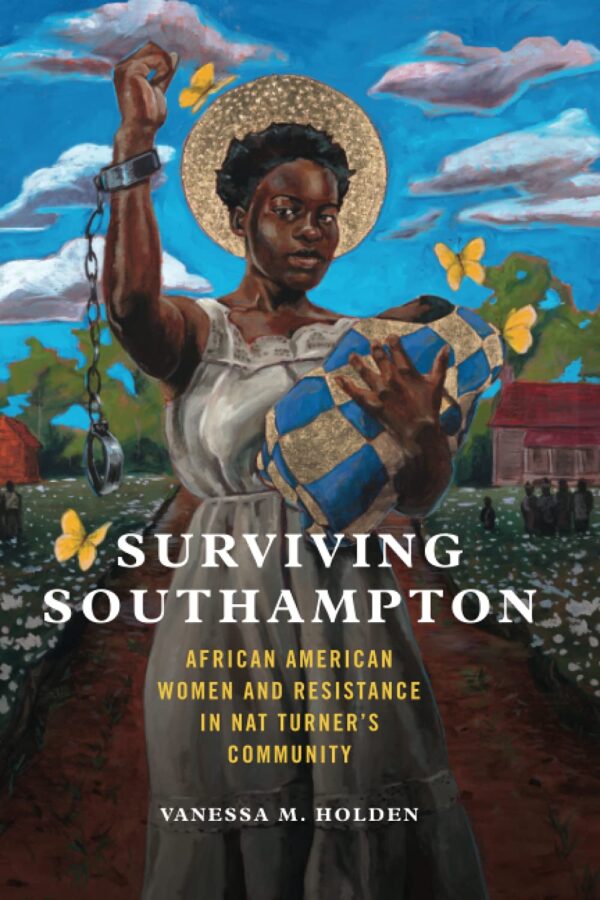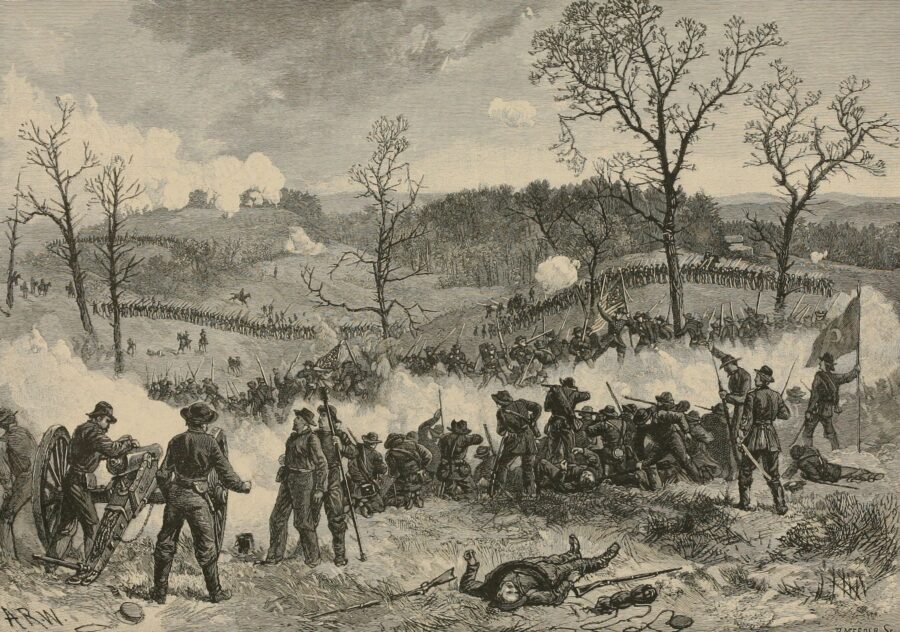Surviving Southampton: African American Women and Resistance in Nat Turner’s Community by Vanessa M. Holden. University of Illinois Press, 2021. ISBN: 978-0252085857. $22.95.
 The name that is associated with any given event usually reveals how we remember it. In the case of “Nat Turner’s Rebellion,” the focus on the revolt’s “leader” is clear. Turner has received plenty of attention lately, not only in several new books, but also with an exhibit at the National Museum of African American History and Culture and a blockbuster movie. Americans, keen on uncovering historical figures that harmonize with contemporary priorities, have found in Turner’s resistance to racial oppression a usable past.
The name that is associated with any given event usually reveals how we remember it. In the case of “Nat Turner’s Rebellion,” the focus on the revolt’s “leader” is clear. Turner has received plenty of attention lately, not only in several new books, but also with an exhibit at the National Museum of African American History and Culture and a blockbuster movie. Americans, keen on uncovering historical figures that harmonize with contemporary priorities, have found in Turner’s resistance to racial oppression a usable past.
But as Vanessa Holden ably demonstrates in her new book Surviving Southampton, Turner did not act alone. He was raised in a community peopled by parents, siblings, and children—characters who rarely take a prominent role in narratives of the rebellion. Partly, this is because Turner’s own account, filtered through his white narrator, focused on his own actions, aided and abetted by other male soldiers. Yet these silences are significant. Holden reframes the episode as the “Southampton Rebellion,” convincingly arguing that only when we consider everyone involved does the whole picture come into focus.
More than a history of the Southampton community, this book is a social history of enslaved societies in the antebellum South. Holden is especially interested in the silent and often overlooked work performed by women. Enslaved women found ways to stifle slave patrols that circulated through their communities; for instance, they passed messages through innovative codes. Their activities set the stage for grander moments of resistance, like the Southampton uprising in 1831.
Holden’s analysis really shines when dissecting the intimate spaces in which enslaved women and children labored and lived. Most of the farms and plantations, including in Southampton, were small, and the circles of connection were quite limited. Women and children were therefore crafty and creative in their roles as mobile agents of resistance, learning to navigate their physical and theoretical worlds in ways that drew limited attention yet enabled significant change. Kitchens doubled as spheres for labor and resistance; jail cells doubled as venues for both holding and strategizing.
Another group of overlooked participants in the rebellion were free Blacks. Southampton had one of the largest free Black communities in Virginia, and free women of color had the most inter-plantation mobility among African American residents. This group also faced the harshest consequences of the revolt, as they were the physical embodiment of Black freedom that frequently terrified enslavers. Therefore, these free Blacks faced both legal and extralegal violence in the wake of the rebellion; they were then legislated out of the state entirely when politicians determined that Virginia could no longer tolerate their presence.
Perhaps the most poignant section in Surviving Southampton is its chapter on enslaved children. These children were everywhere in antebellum plantations and constituted a majority in many of Southampton’s communities, despite rarely showing up in the traditional narratives. Their proximity to the rebels made them crucial witnesses during the trials, forcing these young children to face the impossible dilemma of choosing to cooperate or be punished. The chapter is framed around the experience of one young boy, Moses, who was among four enslaved children interviewed and convicted. They were all found guilty and sentenced to death. Though the county recommended the governor to commute their sentences, which he did, all four boys were then sold out of state, separating them from their beloved families.
That Turner did not mention women and children in his narrative of the insurrection did not mean that they did not participate, but that their work was so embedded in enslaved life that it was taken for granted. His narrative emphasizes the influence these women had on his development, but then goes silent when discussing their role in the revolt itself, perhaps to shield them from consequences. Regardless, Holden demonstrates that these silences are instructive, and that the legacies passed down in succeeding generations show a group of women who carved out limited but powerful spheres of agency within a world of oppression.
Much of Holden’s work is based on later reminiscences and “reading the gaps” of archival records. Though these sources are limited when confirming the validity of specific dates and episodes, they certainly capture the memories and lessons passed down within these communities. An unstated yet powerful argument in Surviving Southampton is that if we are to understand the enslaved women and children who populated these societies, we must reconsider what priorities we bring to our work, which voices we amplify, and what methods we use.
Given the book’s clarity of prose, relevance of message, and overall efficiency—the main text only numbers 125 pages—Surviving Southampton is an ideal choice for upper-division history courses. Vanessa Holden successfully moves our attention from Nat Turner to his community at a time when the appeal for uncovering societies of resistance has never been more apparent.
Benjamin E. Park is Assistant Professor of History at Sam Houston State University. His most recent book is Kingdom of Nauvoo: The Rise and Fall of a Religious Empire on the American Frontier (2020).
